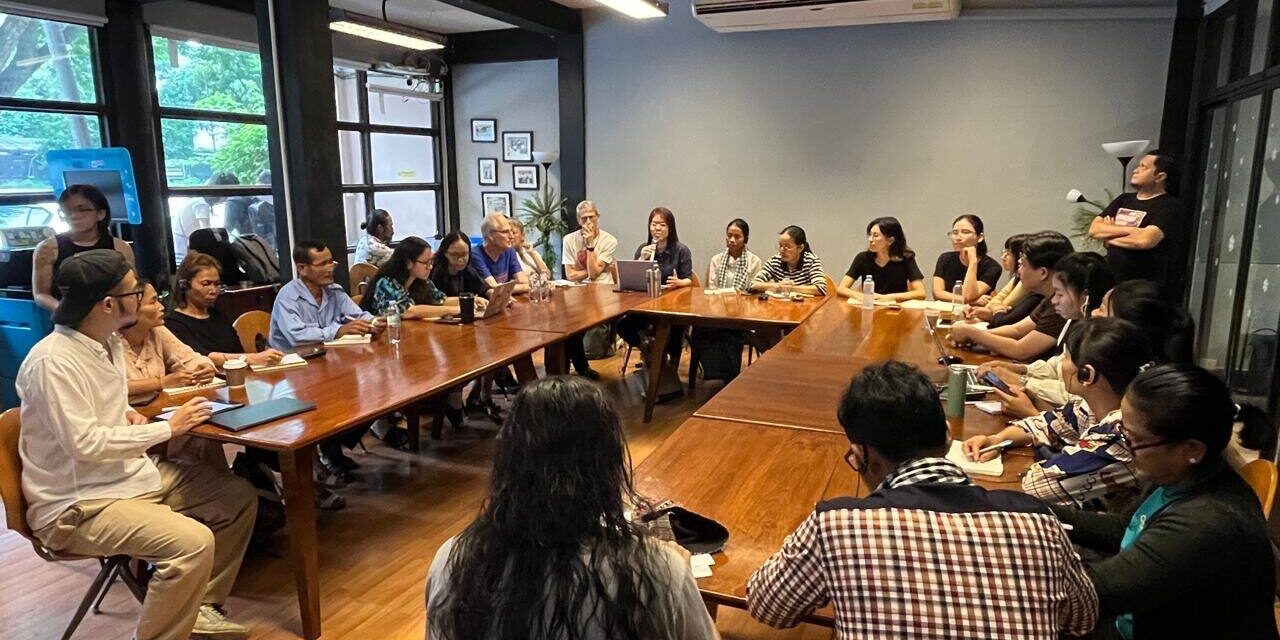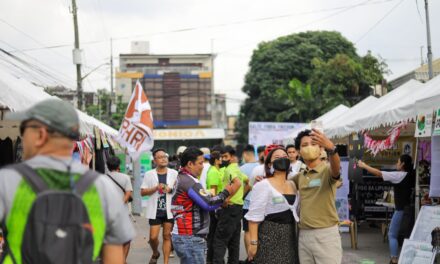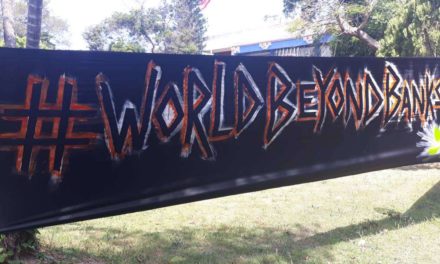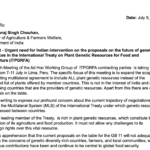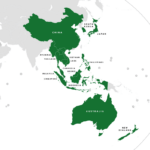Written by Thanita Chanchitpreecha
Edited by Anisa Widyasari, Kheetanat Wannaboworn
On September 28, 2024, Focus on the Global South and Chulalongkorn University Social Research Institute (CUSRI) hosted a roundtable discussion at the Student Christian Center in Bangkok, titled “Sound of the Struggles and His/Herstory” as part of their research collaboration on the “History of Development from Grassroots Perspective.” The event, also organized as part of the Mekong-ASEAN Environmental Week (MAEW) 2024, brought together different activists, artists, and academics to share their experiences and experiments with sound, either as a part of their daily struggles or activism. The discussion explored how sound, something we often take for granted, can represent identity, fear, traumas, and resilience of communities, especially those impacted by displacement and social and economic injustice.
Gu Gu, youth representative from the BEAM Education Foundation shared her personal experience of fleeing Myanmar and migrating to Mae Sot, Thailand, in 2022. She explained that many people from Myanmar, including ordinary people, university students, civil servants, and activists, had to escape because of the conflict. Mae Sot seemed like a place of hope and home to many Burmese refugees, yet in reality, it brought them many challenges. The people who arrived in Mae Sot often still carried their trauma from the war and conflict for which even the sounds of firecrackers, motorcycles or sirens could trigger memories of the violence they left behind. While they sought a new beginning, they faced difficulties such as insecurity, lack of jobs, and even the risk of arrest. Gu Gu described how hard it is for migrant workers, including those who were students and activists, to make a living. For example, a former university student had to work long hours in a restaurant, facing exploitation and intimidation, but it is difficult to report these abuses within the migrant community. She highlights the enduring lives of the Myanmar migrant community in Thailand, who face hardships from various perspectives. She advocates for a powerful strong alliance between Thai and Myanmar activists, and encourages authorities and international organizations to provide support.
The Messenger Band from Cambodia shared their experience as former garment workers who now use music to reflect on social issues, politics, gender inequality, and economic models that impact the local people, which include the land grab and conflict. Some of them worked in factories for over ten years before transitioning to music. The band members explained that before writing their songs, they engage with the community, speaking to farmers, workers, and others to understand their struggles. Their music reflects the voices of the people, capturing emotions and stories that are often overlooked. Through their songs, they aim to connect people and fight for social and climate justice. Their close ties with the Mekong River community also highlight the pressures these communities face, including the presence of military and police forces in the area, which further complicates their ability to freely express their messages through music.
May Thu Khine, a youth representative and Wellness Associate from the BEAM Foundation, spoke about her shift from being an engineering student to focusing on art therapy. Her work now revolves around providing psychological support and education to youth, particularly those who have been displaced. She attended a three-day intensive workshop on oral history, and was inspired to explore through oral history how the sounds around us can reflect the experiences of displacement. In her research’s interviews, interviewees identified the main sources of their stress, which often came from their surroundings, such as financial problems, alcoholism, and neighborhood noise. One participant mentioned how the sound of a car could wake her up, while another spoke about the fear triggered by the unique sound of loose chains on the police motorcycles in Mae Sot. These sounds reminded them of being constantly on alert, fearing for their safety. She emphasized the importance of resilience within these communities, where people support each other and hold onto hope, despite their challenging circumstances.
Reverberation Area, a group that started with two friends, shared their journey of working on projects that blend art and social activism. Initially, their work focused on environmental issues, but over time, it expanded to cover other social issues by collaborating with friends and experts from various fields. They now work across different disciplines, combining sound art with exhibitions, performances, and lectures that highlight injustices in society. Their projects challenge the traditional methods used by NGOs, offering new ways to reflect on the problems facing communities through creative approaches.
Assoc. Prof. Narumon Arunothai provided reflections on how sound is often overlooked in favor of visual elements, even though it plays a significant role in how people experience their environments. She shared her reflections from a project on the sea nomads and how important the sound of the sea is to their identity and way of life. One of the documentary projects she recalled captured the moment where sea people put a seashell to their ear to listen to the sound of waves and sea, showing the reminiscence of their home, and how their lives are deeply connected to the ocean. However, sea peoples are now losing their land, and with that, the connection to their soundscape is also under threat. She suggested that collaboration with activists and artists like those at the roundtable could be an inspiration for her future work with sea nomads, and help bring more attention to the struggles of sea nomads.
The roundtable concluded with participants reflecting on the power of sound in both activism and healing. The stories shared throughout the event showed that sound is not just a backdrop to our lives but a key part of how we experience and understand the world, especially for those who have experienced displacement and trauma. Despite the challenges, there was a sense of hope and determination, with participants expressing a desire to continue using sound to amplify the voices of those who are often silenced. The event highlighted the need for collaboration between artists, activists, and communities to bring about social change and ensure that these voices are heard.

